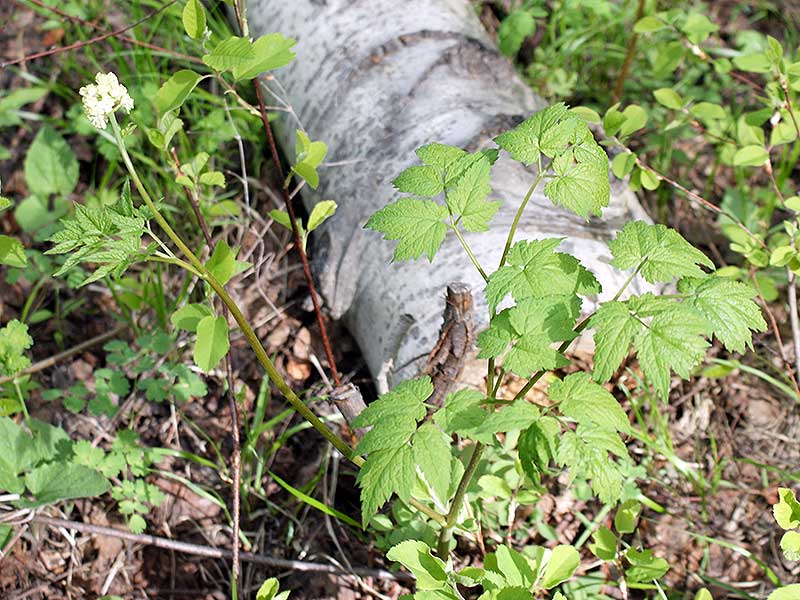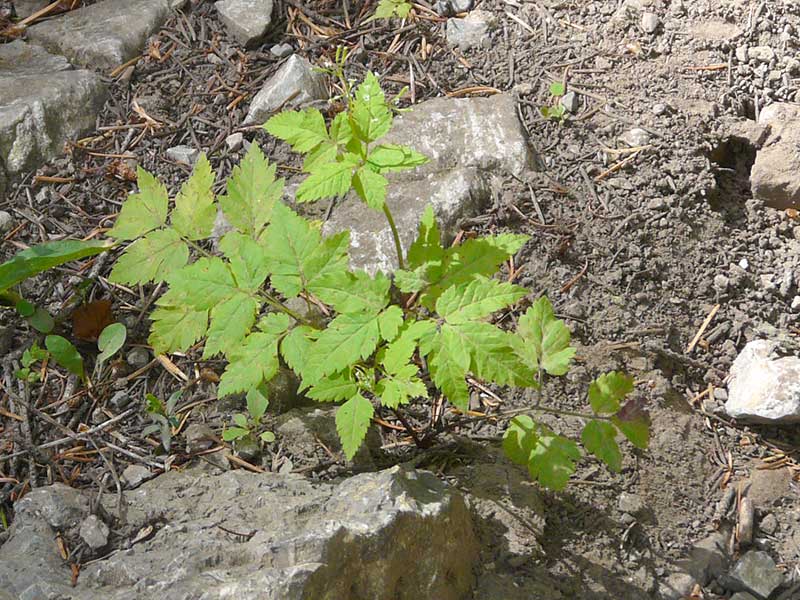Osmorhiza spp / sweet cicely
- broad compound, bluntly toothed, fern-like leaves 3 times compoundly divided
- compound umbels of tiny white flowers; May-June
- short, understory herb
There are a number of Osmorhiza species in Idaho and for the most part they look (to me) quite similar. I have tentatively identified the species in the gallery as O. berteroi, the mountain sweet cicely, a.k.a. O. chilensis, but without a good deal more effort, perhaps this year, I can’t come close to really believing that.
There are a number of common characteristics of the cicelies. Mostly, you will see it in a vegetative stage, even if it is actually flowering or fruiting. It is an upight-ish herb with three-part, compound leaves, coarsely toothed. Sometimes the teeth go quite deep. And sometimes, it appears that it is even multiply compound due to the arrangement of the leaves. The leaves are odorless for most species, but if you find one that smells strongly of licorice, it may be aniseroot.
Cicely has teeny white, beak-like flowers borne in umbels. They appear in early spring. The peduncles (umbel stems) are up to an inch long.
The real diagnostic parts of cicely plants are the fruits. In O. berteroi, the body of the fruit is long and narrow with a longer-than-wide conical-shaped stylopodium. That’s the main bit of the fruit in this genus and is a swollen, elongated thing that develops from the style. In O. depauperata – the most likely alternate ID – the fruit is shorter and wider and the stylopodium is broader than it is high. The seeds, in mid-summer, are black and needle-shaped.
Cicely grows in open forests, both coniferous and deciduous, often in full shade. Its soil preference is well-drained, meaning you won’t find it in boggy places. It is found in almost every state and Canadian province from sea-level to mid-elevations. Cicely propagates by seed or vegetatively by layering or division.
| Color | |
|---|---|
| Family | |
| Blossom size | |
| Inflorescence size | |
| Inflorescence type | |
| When? | |
| Where? |


